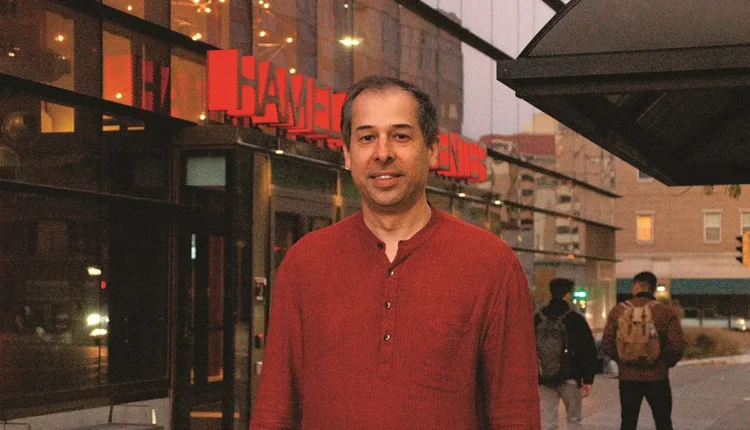In the bustling jazz landscape of New York City, where creativity knows no bounds, Arun Luthra stands as a testament to the fusion of diverse musical traditions. A saxophonist, konnakol artist, composer, and bandleader, Luthra has carved a niche for himself in the realm of jazz by seamlessly blending the modern post-bop sound with the rich tapestry of Indian classical music.
A Musical Odyssey of Arun Luthra
Born in Worcester, Massachusetts, Arun Luthra’s roots weave through a multicultural tapestry. His Indian father and British mother brought a unique blend of influences to his upbringing, creating a household steeped in cultural richness. Surrounded by records, books, and exposure to various artistic forms, Luthra’s artistic journey began at a young age.
His father’s love for Hindustani music, especially Sufi devotional songs, became a rhythmic backdrop to his childhood. This early exposure sparked a deep connection with the vocalized rhythms of Indian classical music, a connection that would later find expression in Luthra’s konnakol artistry.
A Diverse Journey
Formal music training in Belgium initiated Luthra into European classical guitar at the age of nine. However, it was the saxophone that eventually became his primary instrument, propelling him into a prolific career.
Arun Luthra delved into the intricacies of Carnatic and Hindustani music rhythms, mastering the art of konnakol – a rhythmic vocal language integral to Indian classical music.
His career boasts collaborations with jazz legends like Billy Harper, Eddie Henderson, and Kenny Garrett. From The Temptations to Sufi singer Zila Khan, Luthra’s musical journey transcends genres and continents. Recognized for his contributions, he was named the 2017-2018 composer-in-residence at Flushing Town Hall, earning a New Work Grant to premiere his compositions.
Composer and Educator
A multifaceted artist, Arun Luthra wears the hat of a composer, arranger, and sidemusician. Beyond his performances, he imparts his knowledge at The New School’s College of Performing Arts, sharing the faculty with jazz and world music luminaries.
His commitment to education extends to his course, “The Universal Language of Rhythm: Explorations through Konnakol and Black American Music,” where he connects the rhythmic universality of music with diverse cultural experiences.
Konnakol: The Heartbeat of Fusion
Konnakol, deeply rooted in Indian classical music, serves as a rhythmic bridge between cultures. Originating as a vocal teaching tool, it evolved into a distinct percussive art form.
For Arun Luthra, marrying his saxophone with konnakol was not a conscious choice but an organic expression of his identity. Growing up amidst diverse influences, it became an essential part of his musical language.
Interdisciplinary Exploration
Luthra’s residency at the University of Wisconsin-Madison’s Division of the Arts reflects his commitment to interdisciplinary exploration.
His course delves into the connections between konnakol and Black American music, exploring rhythm as a universal phenomenon. Embracing diverse ideas, the course caters not only to musicians but to anyone intrigued by the intersection of rhythm, physics, and culture.
Beyond Music: Political Activism and Identity
A child of colonialism, Luthra intertwines his personal experiences into his artistic narrative. The impact of colonialism, interracial struggles, and the role of music in political activism feature prominently in his discourse. Rhythm, according to Luthra, is the primal essence of the universe, a thread connecting Hindu mythology to quantum physics.
Also Read: Sreenath Sreenivasan: A Digital Pioneer’s Journey in Journalism

